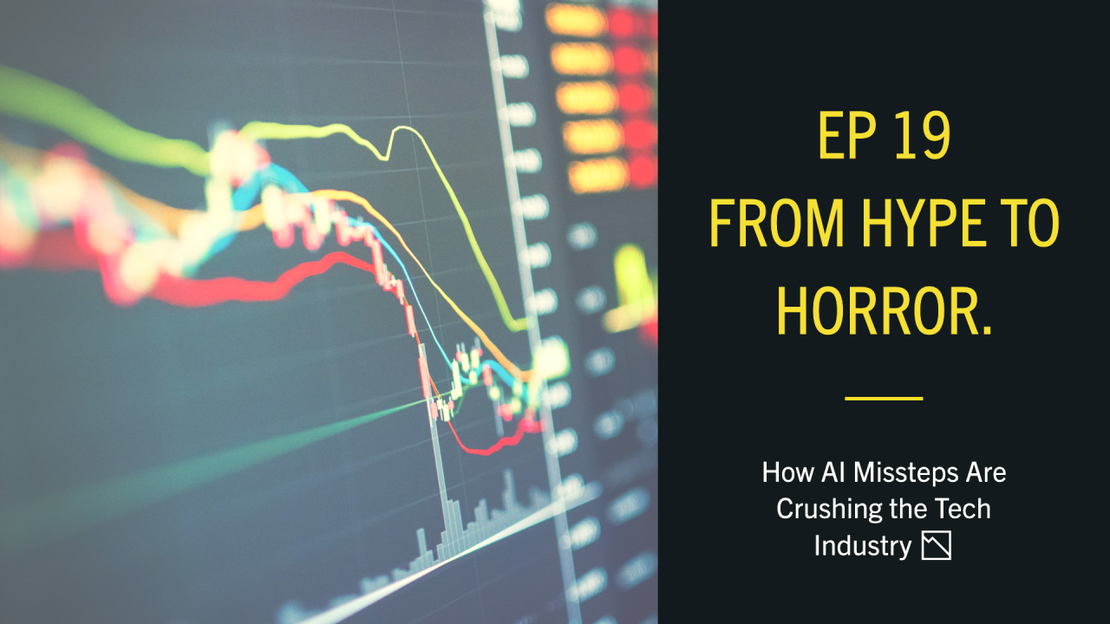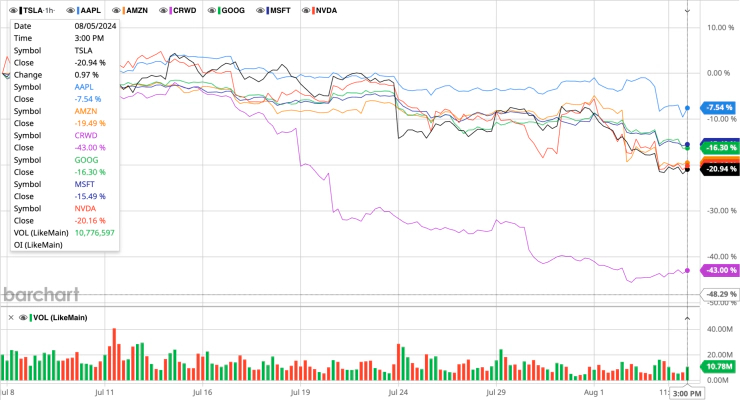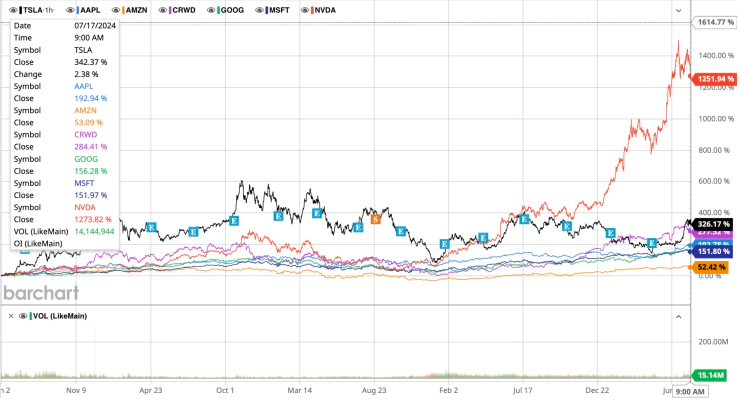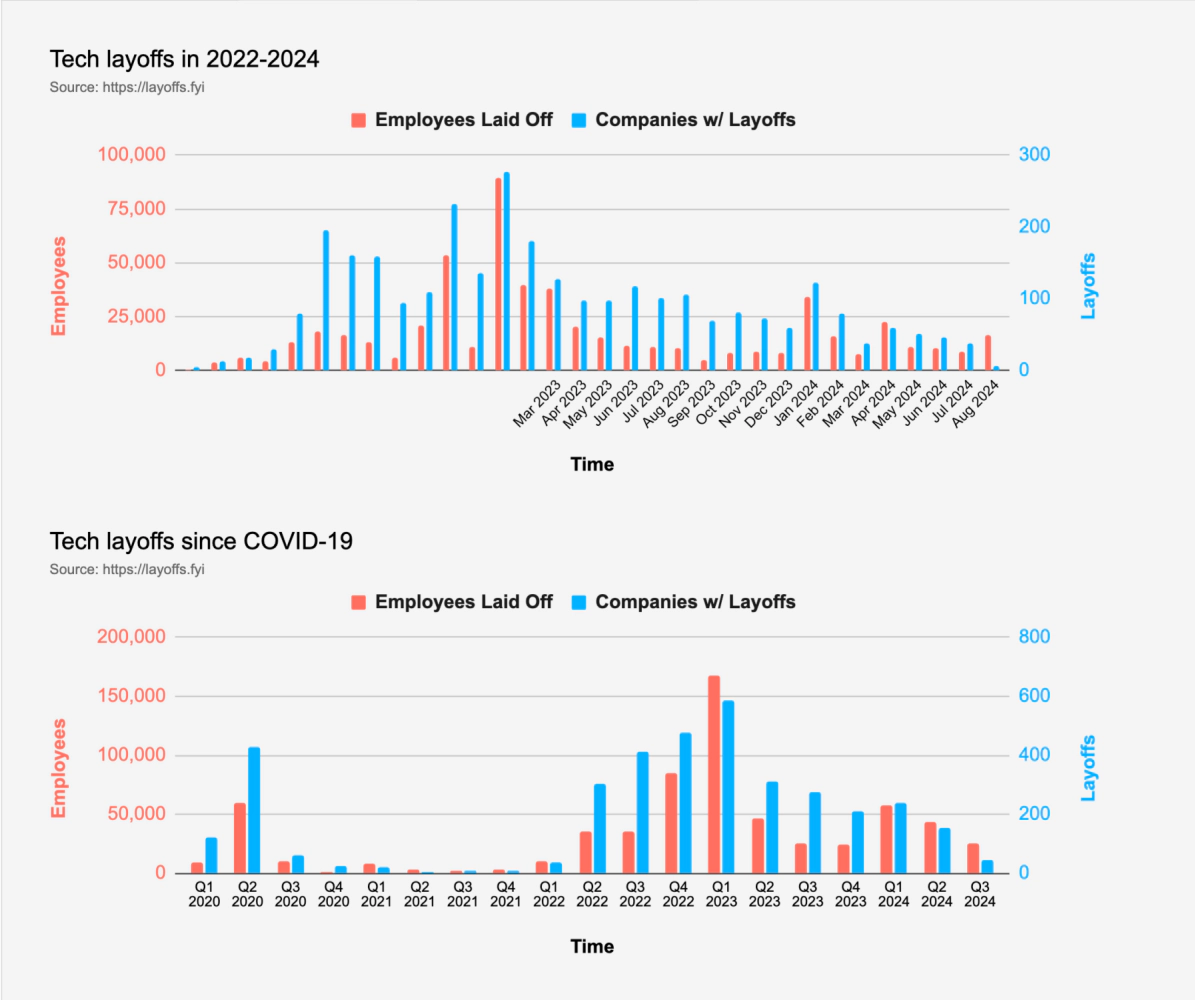Visionary Digital Evolution Strategist
Rooted in Formula 1 excellence, with over 30 years in IT starting as a child in the 1980s, …

Welcome back digital warriors! ⚔️
In these mornings ☀️, we’re waking up with a strange sense of panic 🙀 — something you feel deep in your gut as you sip your morning coffee ☕️ and open your stocks app. This panic has a name:
📉 the fall of the tech giants.
We’re talking about a massive market drop following the recent earnings reports, just days after the CrowdStrike disaster. It’s been a while since we’ve seen anything like this, a market shake-up so intense that it’s left even the most seasoned investors scrambling for answers.

Now, I’m not here to dive into the nitty-gritty of financial analysis—what the Fed might do to correct this, or how the Yen’s role in cross-trade mechanisms played into this mess. That’s not my domain. As a CEO, I stay informed about the global economy, but only to better fine-tune my strategy. What I really want to explore today is why the market reacted so violently to earnings reports that weren’t, on the surface, all that bad. Why did it happen? 😱 Is the -43% drop in CrowdStrike’s stock a sign of a broader awareness in the global economy about the risks of sloppy software development?
Unfortunately, the answer is probably no. But there’s something closely related to the world of software development at the heart of this market plunge. Let’s deep dive into it!
Since the release of ChatGPT’s beta version in June 2020, AI has been hyped as the ultimate game-changer for the tech industry. Tech giants like Google, Microsoft, Meta, IBM, Nvidia, Intel, and Amazon have poured billions into AI development, promising that this technology would revolutionize everything from customer service to data processing. The excitement was palpable, with investors eagerly buying into the vision, driving stock prices to new heights.

But as the hype soared, so did the pressure to cut costs and streamline operations. In the wake of the COVID-19 pandemic, many of these tech giants embarked on massive layoff campaigns, replacing thousands of employees with AI-driven solutions. The rationale was clear: AI was not only the future but also a way to reduce headcount (post COVID) improving operation efficiency switching capitals elsewhere. Companies like Google, Meta, Intel, and Microsoft led the charge, cutting thousands of jobs in 2023, and continuing in 2024.

However, the reality of AI is starting to set in, and it’s not the silver bullet many hoped it would be.
😡 AI has struggled to meet the sky-high market expectations.
The rapid push to improve operational efficiency with AI has revealed significant challenges—AI is costly, complex, and not yet fully capable of solving all the problems it was meant to address. This disconnect between expectations and reality has begun to bite, with the consequences becoming increasingly apparent in the tech sector’s financial 2024 Q2 performance. Companies that bet big on AI are now grappling with the realization that AI alone cannot drive the profitability they need. The layoffs, which were meant to streamline operations and free up resources for AI development, may have gone too far, leaving these companies vulnerable as they navigate an increasingly uncertain market.
💡 AI, despite all the hype, is far from being a panacea, especially when it comes to software development.
The expected profits, savings and operational efficiencies from AI haven’t materialized at the pace needed to justify the massive investments in R&D and infrastructure. The market is feeling the strain. Investors who once eagerly backed AI are starting to question whether the hype was overblown. As they come to terms with the fact that AI’s promised returns are not immediate, stocks are dropping, and the tech sector as a whole is under increased scrutiny.
What the market is now realizing is that the true cost of AI goes beyond the financial. The massive investments required for AI development, combined with its current limitations, are leading to growing doubts about the technology’s reliability and maturity. This has upset investors who expected AI to be a quick plug&play fix, but are now faced with the reality that AI might not be ready to deliver yet on its grand promises.
The fallout from these miscalculations is evident as tech giants struggle to balance the financial pressure to innovate with the true cost of advancing AI (algorithms and infrastructure).
The recent CrowdStrike outage is a stark reminder of the risks involved in deliberately deny to adhering to rigorous software engineering principles. This incident underscores the dangers of over-relying on technology that hasn’t been properly developed, tested, and delivered revealing the vulnerabilities that can emerge when companies cut corners in their pursuit of financial and operational efficiency.
For businesses that have laid off experienced staff in favor of AI-driven solutions, the potential for this kind of failure isn’t just high—it’s practically lurking around the corner, ready to strike. This kind of oversight can lead to catastrophic outcomes for your organization, as the immature state of AI technology falls short of meeting the complex demands of real-world application development. While AI indeed holds incredible promise, it also carries significant risks when deployed without adequate human oversight and expertise.
Consider this: current AI software development accuracy hovers around just 37%. This means there’s a very real chance that the software running your infrastructure was built with shortcuts and insufficient engineering practices. If that doesn’t make you uneasy, it should. An event similar to CrowdStrike’s catastrophic outage, which led to a dramatic 43% stock plunge, could be even more damaging for your company.
Unfortunately, history suggests that the market and industry often struggle to learn from past mistakes, as George Kurtz did in 2010 with McAfee and then in 2024 with CrowdStrike. But, you my dear CXOs-leaders in your organizations, it’s your responsibility to steer the ship back on course by reinvesting in skilled professionals and regaining control over your IT departments.
Moving forward, it’s crucial for your tech company to strike a balance between embracing AI and maintaining the human talent necessary to manage it effectively. Failing to do so risks falling into a vicious cycle of outages, layoffs, and unmet expectations—a rodeo that none of you want to endure, right? 😉
To navigate these challenges, you need to rely on seasoned experts in software engineering and craftsmanship. Whether through individuals or consultancy firms, having experienced professionals by your side is essential. Our team is here to support you in these turbulent times, helping your leadership, board of directors, and investors align on a strategy that fosters sustainable growth. Together, we can steer your company through these difficulties, implementing strategies that align with the new industry 5.0 vision.
Don’t leave your company’s future to chance—partner with us to leverage our unique, behaviorally engineered platform, the Unicorns’ Ecosystem. Let’s work together to ensure your technology and your team are ready for the challenges ahead.
Stay tuned for the next episode, where we’ll delve deeper into the components of the Unicorns’ Ecosystem following up on how the organizational assessment is working. Until next time, keep evolving! 🌟
To stay in the loop with all our updates, be sure to subscribe to our newsletter 📩 and podcast channels 🎧:
🎥 YouTube
📻 Spotify
Visionary Digital Evolution Strategist
Rooted in Formula 1 excellence, with over 30 years in IT starting as a child in the 1980s, …